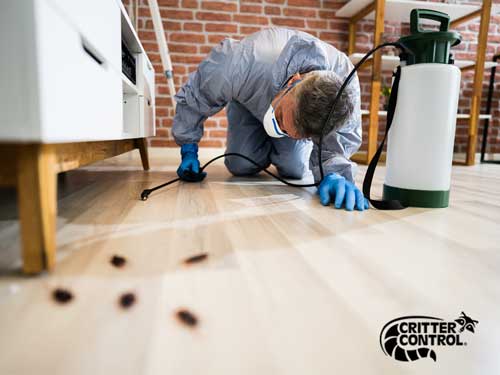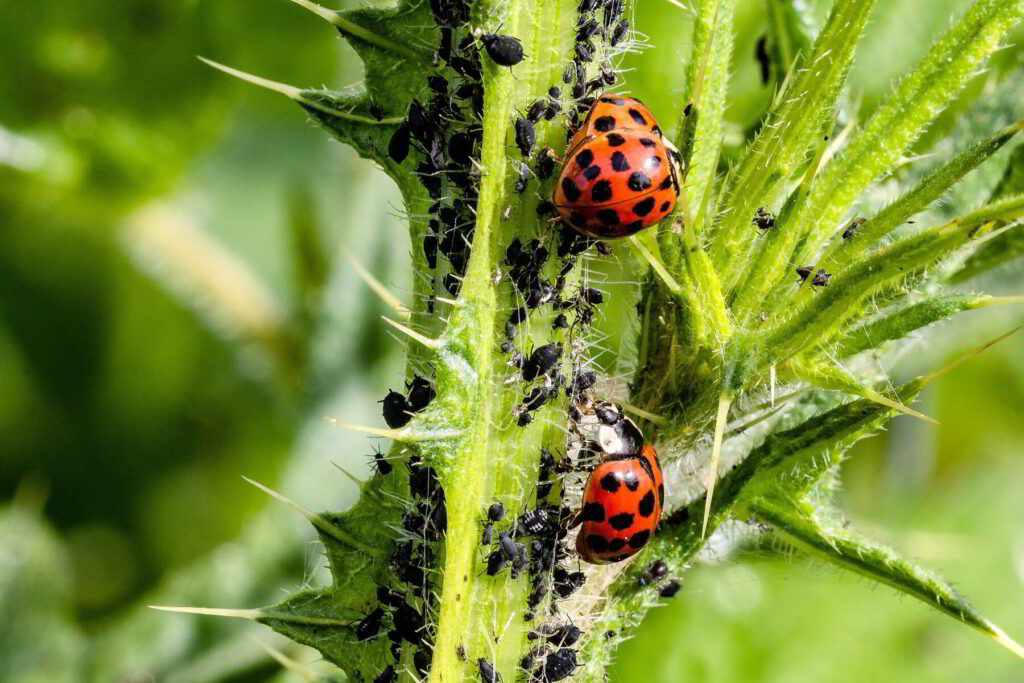Crucial Guide to DIY Bug Control Techniques for a Pest-Free Home
In the pursuit for a pest-free and tranquil home atmosphere, mastering the art of DIY bug control methods is a valuable ability. By recognizing the fundamentals of bug identification, avoidance techniques, and the use of all-natural repellents, people can take proactive steps towards safeguarding their homes. What are the most effective Do it yourself bug control strategies, and just how can they be effortlessly integrated into your regimen?
Identifying Common Household Pests
The very first action in reliable bug control is accurately determining the typical household parasites existing in your space. By identifying the specific bugs attacking your home, you can tailor your parasite control efforts to address them directly, resulting in a more effective and effective elimination procedure.
Usual house bugs consist of insects such as ants, cockroaches, crawlers, and bed insects. Furthermore, rats like rats and mice are frequent unwanted visitors in suburbs. It is essential to compare these pests as each might require various control methods.
When determining insects, take notice of physical characteristics such as dimension, color, and markings. Droppings, nests, and damage to home can also supply ideas concerning the kind of insect invasion you are taking care of. Utilizing resources like insect recognition guides or seeking support from pest control experts can aid in accurate recognition.
Once you have actually identified the common household insects in your space, you can continue to apply targeted pest control strategies to effectively take care of and get rid of the invasion.
Implementing Preventative Steps
To effectively prevent bugs from infiltrating your home, positive implementation of preventative actions is vital. Trim back trees, hedges, and bushes that are close to your home to avoid easy access for insects. In addition, get rid of standing water sources both inside and outside your home to stay clear of attracting pests like rats and insects.
Utilizing Natural Insect Repellents
After developing a solid foundation of preventative measures to protect your home versus insects, the emphasis now changes in the direction of using all-natural bug repellents for an added layer of protection. All-natural pest repellents supply a environment-friendly and risk-free option to chemical-based items, reducing the threats associated with hazardous compounds in your living environment.
One effective all-natural insect repellent is vital oils. Pepper mint oil, for instance, is understood to fend off mice, ants, and spiders as a result of its solid scent. Merely weaken a couple of drops of peppermint oil in water and spray it around access factors and areas where insects are likely to enter.
One more prominent choice is diatomaceous planet, a fine powder made from fossilized remains of marine phytoplankton. This substance is very reliable versus creeping insects like cockroaches, fleas, and ants. Sprinkle diatomaceous earth in splits, gaps, and other hiding spots to dehydrate and eliminate insects on call.
Do It Yourself Insect Traps and Baits
Exploring homemade insect traps and lures gives house owners with affordable solutions to properly manage and manage pest invasions within their living rooms. Do it yourself parasite traps can be made making use of simple materials discovered around the house, such as plastic bottles, vinegar, or sugar.
Likewise, homemade bait terminals can be efficient for controlling ants, rats, or cockroaches (Pest Control Near Me). These catches can be made making use of safe active ingredients like water, sugar, and borax, which bring in insects and eliminate them without positioning a threat to animals or member of the family. By purposefully placing these catches in areas where pests are active, property owners can efficiently lower bug populations and keep a pest-free home atmosphere
Preserving a Pest-Free Setting
Efficiently sustaining a pest-free setting calls for constant alertness and proactive procedures to stop pest reinfestation in domestic rooms. On a regular basis evaluating the surroundings for indicators of bugs, such as droppings, gnaw marks, or nests, go now is critical in recognizing potential invasions beforehand. Preserving sanitation by without delay tidying up spills, keeping food in closed containers, and dealing with waste appropriately assists eliminate attractants for bugs like rodents, roaches, and ants. Sealing entry points, such as fractures in wall surfaces, gaps around imp source windows and doors, and openings for utility lines, can stop bugs from penetrating the home. Furthermore, maintaining exterior areas well-trimmed and eliminating clutter like stacked fire wood or debris near your house can discourage parasites from nesting near to the residential property. Implementing safety nets like installing door moves, fixing screens, and utilizing dehumidifiers to lower wetness degrees can likewise contribute to a pest-free atmosphere. By embracing these practices consistently, home owners can develop an inhospitable environment for insects and appreciate a clean, pest-free home.
Conclusion

In the mission for a tranquil and pest-free home setting, understanding the art of DIY parasite control strategies is an important ability. Using sources like parasite identification overviews or looking for assistance from bug control experts can aid in accurate identification.
Checking out homemade parasite catches and baits provides house owners with economical options to successfully handle and manage pest infestations within their living areas. By strategically positioning these traps in areas where bugs are active, homeowners can effectively decrease parasite populations and maintain a pest-free home environment.
